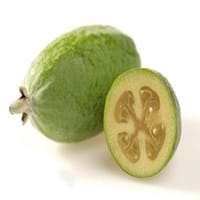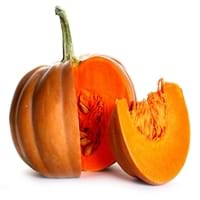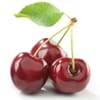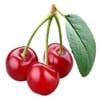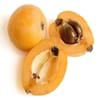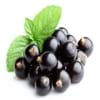Health Benefits
Anti depressant, Cancer prevention, Reduces nervous tension, Treatment of alzheimer's disease, Treatment of Lung disease
Arthritis treatment, Cancer prevention, High Cholesterol Regulation, Lower blood pressure, Helps Prevent cataract, Prevents gall stones, Ulcer treatment, Weight loss properties
General Benefits
Digestive aid, Helps in weight loss, Improves blood circulation, Strengthens bones, Treatment of common cold
Boosts respiratory health, Eliminate parasites and infections, Protects against birth defects, Strengthens bones
Skin Benefits
Brightens and lightens complexion, Skin rejuvenation
Heals sunburn, Hydrates skin, Skin rejuvenation
Hair Benefits
Promotes longer and healthier hair, Protects hair
Regulates hair growth
Allergy Symptoms
NA
Abdominal cramps, Anaphylaxis, Digestive Problems, Dizziness, Eczema, Fainting, Hives, Inflammation, Itching, Tingling sensation in wrist and face, Vomiting, Wheezing
Side Effects
Allergic reaction
Kidney and gallbladder diseases
Best Time to Eat
As a snack in the late afternoon, Don't consume at night and before bed, Eat the fresh ones, avoid mixing with any other foods, don't eat after meal., Morning time (before lunch)
Along with meal, Don't eat after meal, Morning time (before lunch)
Vitamin A (Retinol)
Not Available
Vitamin B5 (Pantothenic Acid)
Vitamin C (Ascorbic Acid)
Vitamin K (Phyllochinone)
Phytosterol
Not Available
Calories in Fresh Fruit with Peel
Not Available
Calories in Fresh Fruit without Peel
Calories in Frozen Form
Not Available
Not Available
Calories in Dried Form
Not Available
Calories in Canned Form
Not Available
Season
Autumn, Winter
All seasons
Varieties
Anatoki, Gemini, Kaiteri, Kakariki, Pounamu, Unique, Apollo, Den's Choice, Kakapo, Mammoth, Opal Star, Triumph and Wiki Tu
Jarrahdale, Peanut, Lakota, Cow, Sugar, Caribean, Red kuri, Buttercup and Pink lady
Color
Green
Blue, Green, Orange, Red, White
Inside Color
White
Creamy Yellow
Texture
Succulent
Fibrous
Taste
Sweet
Creamy, Soft, Sweet
Origin
Argentina, Brazil, Paraguay, Uruguay
Mexico
Grows on
Not Available
Vines
Soil Type
Clay loam, Gravely loam, Sandy
Clay loam, Sandy loam, Well-drained
Climatic Conditions
Cold, Warm
Warm to hot climate
Facts about
- Feijoa is called as "pineapple guava" in some countries.
- Feijoa tree is an ornamental plant that can also be used as hedge & windbreak.
- All parts of feijoa fruit are edible(skin is mostly discarded).
- The name pumpkin has its roots in the Greek word ‘pepon’, meaning ‘large melon’.
- The largest pumpkin ever grown weighed 1,140 pounds.
- Pumpkins were once known for removing freckles & curing snake bites.
Top Producer
New Zealand
China
Other Countries
Australia, Azerbaijan, India, Japan, United States of America
Egypt, India, Indonesia, Iran, Italy, Mexico, Russia, Spain, United States of America
Top Importer
China
United States of America
Top Exporter
New Zealand
China
Botanical Name
Acca sellowiana
Cucurbita maxima
Synonym
Feijoa sellowiana or Orthostemon sellowianus
Cucurbita pepo, Squash
Subkingdom
Tracheobionta
Tracheobionta
Division
Magnoliophyta
Magnoliophyta
Class
Magnoliopsida
Magnoliopsida
Subclass
Rosidae
Dillenhidae
Order
Myrtales
Cucurbitales
Family
Myrtaceae
Cucurbitaceae
Species
A. sellowiana
Cucurbita mixta
Generic Group
Myrtle
Not Available
Compare Feijoa and Pumpkin
It is important compare Feijoa and Pumpkin as both the fruits have a different nutritional value. Their comparison can be done on the basis of their vitamin and mineral content, calories, benefits as well as characteristics, making it easier for us to choose the best fruit for our diet. Their general health benefits are as follows:
Feijoa Benefits: digestive aid, helps in weight loss, improves blood circulation, strengthens bones and treatment of common cold.
Pumpkin Benefits: boosts respiratory health, eliminate parasites and infections, protects against birth defects and strengthens bones.
Fruits are also used as a remedy for various hair problems. The hair benefits of Feijoa are: promotes longer and healthier hair and protects hair and hair benefits of Pumpkin are: regulates hair growth. Some fruits are known to cause allergic reactions. The allergy symptoms of first fruit are: na and the symptoms of second fruit are: abdominal cramps, anaphylaxis, digestive problems, dizziness, eczema, fainting, hives, inflammation, itching, tingling sensation in wrist and face, vomiting and wheezing. Get sorted Feijoa vs Pumpkin comparison with the help of fruit comparison tool by fruitvs.com.
